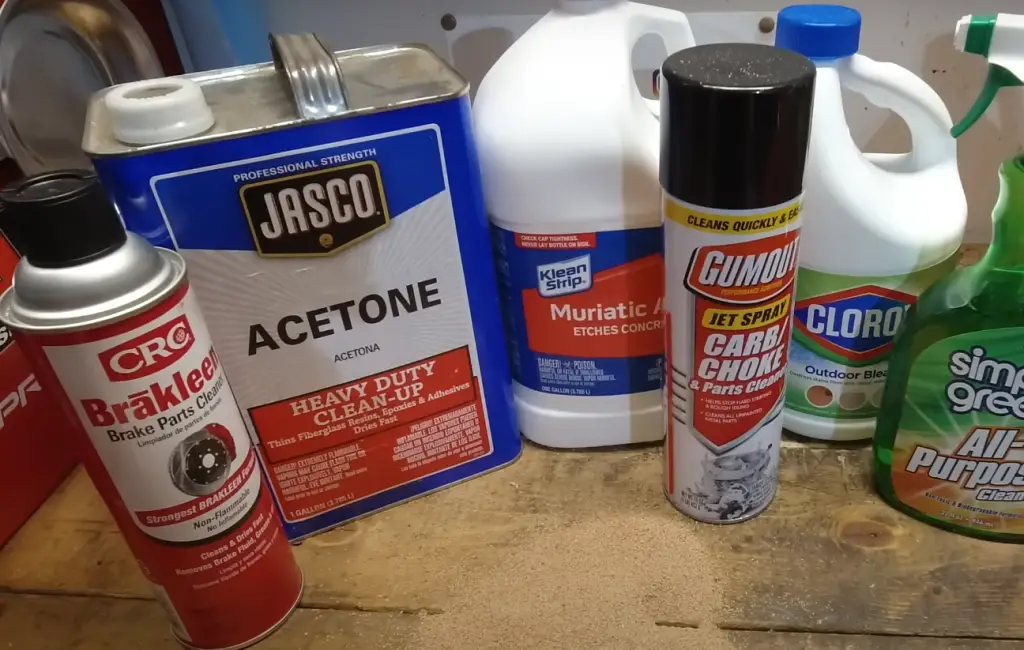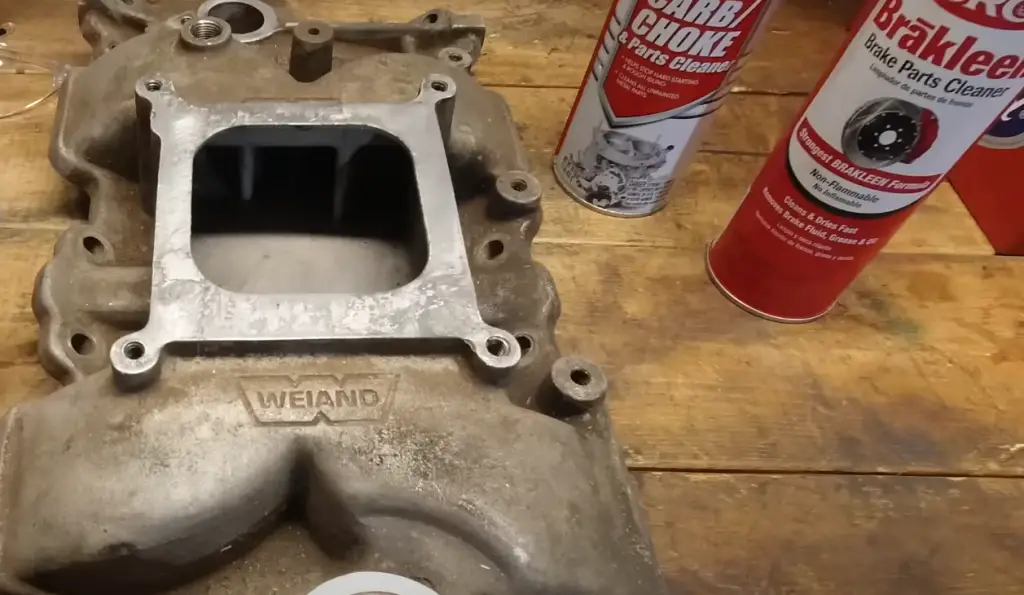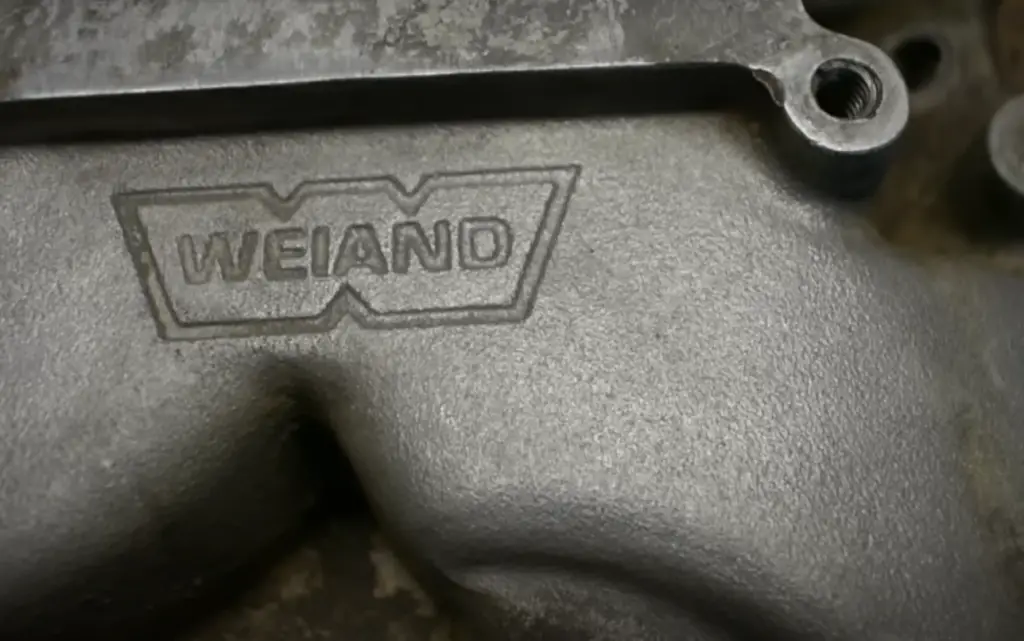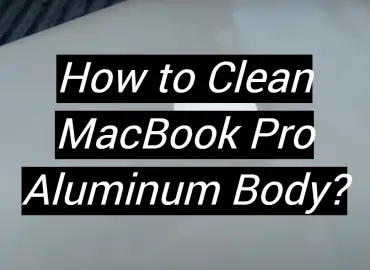Your car’s engine is a finely tuned machine that needs clean air to run properly. The aluminum intake manifold is one of the key components responsible for funneling fresh air into the engine. Over time, this part can become dirty and clogged with oil and debris, causing your car to run poorly. [8] In this article, we will show you how to clean an aluminum intake manifold using safe and effective methods. We’ll also recommend some of the best products on the market for this job. Let’s get started!
Types Of Aluminum Manifold
There are two types of aluminum intake manifold: cast and extruded.
A cast manifold is made by pouring molten aluminum into a mold, while an extruded manifold is made by forcing aluminum through a die.
Extruded manifolds are typically found on performance vehicles because they offer better airflow than cast manifolds.

If you have a cast aluminum intake manifold, it’s important to be careful when cleaning it.
Cast aluminum is more prone to warping and damage than extruded aluminum, so you’ll need to take extra care not to damage the manifold while cleaning it.
Here are some tips for cleaning a cast aluminum intake manifold:
- Use a soft-bristled brush to avoid scratching the surface of the manifold.
- Be careful not to use too much pressure when scrubbing, as this could damage the manifold.
- Rinse the manifold thoroughly with water after scrubbing to remove any residual cleaner or debris.
- Dry the manifold completely before reinstalling it on your vehicle.
However, because extruded aluminum is stronger and more durable than cast aluminum, you don’t need to be as careful when cleaning it.
Here are some tips for cleaning an extruded aluminum intake manifold:
- Use a soft-bristled brush to avoid scratching the surface of the manifold.
- Rinse the manifold thoroughly with water after scrubbing to remove any residual cleaner or debris.
- Dry the manifold completely before reinstalling it on your vehicle.
If you’re not sure which type of manifold you have, consult your vehicle’s owner’s manual or ask a mechanic. Regardless of the type, both can be cleaned with the same methods.[3]
Why is it Important to Clean an Aluminum Intake Manifold?
As we mentioned before, the purpose of the intake manifold is to evenly distribute the air/fuel mixture to each cylinder head. If there are any restrictions in airflow, it can cause problems with the engine.
Dirty intake manifolds can cause a number of issues, such as:
- Reduced fuel economy
- Increased emissions
- Loss of power
- Rough idling
- Stalling

It’s important to clean the aluminum intake manifold on a regular basis so that these problems don’t occur. In this guide, we will show you how to clean both types of aluminum intake manifolds.
Systematic Procedure of How to Clean Intake Manifold
There are a few different ways that you can clean an aluminum intake manifold. We will go over two of the most popular methods: chemical cleaning and mechanical cleaning.
Chemical Cleaning:
- Remove the intake manifold from the engine
- Place the intake manifold in a large container
- Fill the container with a degreaser or solvent
- Let the intake manifold soak for a few hours
- Rinse the intake manifold with water
- Allow the intake manifold to dry completely
- Reinstall the intake manifold
Mechanical Cleaning:
- Remove the intake manifold from the engine
- Inspect the interior of the intakes for carbon buildup and deposits
- Use a stiff brush to remove any loose carbon deposits
- Use a carburetor cleaner or other solvent to remove stubborn carbon buildup
- Rinse the intake manifold with water
- Allow the intake manifold to dry completely
- Reinstall the intake manifold
Ways To Clean An Old Intake Manifold
Cleaning an old intake manifold can be tricky. If the manifold is extremely dirty, you may need to use a strong chemical degreaser. However, if the manifold is only slightly dirty, you can probably get away with using a less aggressive cleaner. Here are some common cleaners that can be used to clean an old intake manifold:
- Simple Green All-Purpose Cleaner
- Formula 409 Multi-Surface Cleaner
- Clorox Disinfecting Wipes
Once you’ve selected a cleaner, you’ll need to decide on the best method for applying it to the manifold. One option is to use a brush or scrubber to work the cleaner into the surface of the manifold. Another option is to soak the manifold in a cleaner solution and then rinse it off with water.[1]
Otherwise, moisture can cause corrosion and other problems down the road. The best way to dry the manifold is with compressed air or a hair dryer set on low heat.
Finally, you’ll need to apply a protectant to the manifold to help prevent future corrosion. There are a number of different products on the market that can be used for this purpose. Some popular options include WD-40 Specialist Protective White Lithium Grease and CRC Heavy Duty Corrosion Inhibitor Spray.

With a little bit of time and effort, you can easily clean an old intake manifold. Just be sure to choose the right cleaner and follow the manufacturer’s instructions carefully. And don’t forget to apply a protectant after you’re finished cleaning!
Simple Green All-Purpose Cleaner, Formula 409 Multi-Surface Cleaner, Clorox Disinfecting Wipes comparison
When it comes to cleaning aluminum intake manifolds, there are a few different cleaners that can do the job. Simple Green All-Purpose Cleaner, Formula 409 Multi-Surface Cleaner, and Clorox Disinfecting Wipes are all great choices for this task. However, each cleaner has its own set of benefits and drawbacks.
This cleaner also has a fresh, clean scent that will leave your engine bay smelling great. However, Simple Green All-Purpose Cleaner can be a bit pricey compared to other cleaners on the market.[5]Formula 409 Multi-Surface Cleaner is another great choice for cleaning aluminum intake manifolds. This cleaner is less expensive than Simple Green All-Purpose Cleaner and it does an excellent job of removing grease and grime. However, Formula 409 Multi-Surface Cleaner can be a bit harsh on sensitive skin.[6]

Clorox Disinfecting Wipes are a great choice for cleaning aluminum intake manifolds because they are convenient and easy to use. However, Clorox Disinfecting Wipes can be harsh on sensitive skin and they are not as effective at removing grease and grime as other cleaners on the market.[7]
FAQ
How Do You Remove Stains From The Aluminum Intake Manifold?
You can use chemical cleaners, sandpaper or a wire brush to clean your aluminum intake manifold. Be careful when using chemicals because some are more aggressive than others and might damage the finish on yours if applied incorrectly!
How do you clean and polish an aluminum intake manifold?
The first step is to remove the intake manifold from the engine. Once it is removed, you will need to clean it with a degreaser and a brush. Be sure to get all of the grease and grime off of the manifold.
After you have cleaned the intake manifold, you will need to sand it down. You can use a coarse sandpaper to remove any oxidation that has occurred on the manifold. Once you have sanded it down, you will need to polish the manifold.[2]
There are a few different ways that you can polish the manifold. You can use a power buffer or you can hand polish it. If you decide to hand polish the manifold, you will need to use a polishing compound and a soft cloth.
Once you have polished the manifold, you will need to protect it from further oxidation. You can do this by applying a clear coat to the manifold. You can also apply a wax to the manifold to help protect it from the elements.
What acid will clean aluminum?
There are a few different acids that can be used to clean aluminum. The most common and effective are hydrochloric acid and phosphoric acid.
Both of these acids will etch the aluminum and remove any build-up or contamination on the surface.
Phosphoric acid is the more aggressive of the two and will remove heavier build-up. Hydrochloric acid is less aggressive and can be used for lighter cleaning.
Does baking soda clean aluminum?
The benefits of using baking soda as an aluminum cleaner are numerous, including its ability to remove grease and grime; dissolve stains; cut through dirt & debris which could clog up your engine if not removed properly. Besides being safe on all types of metals (including copper) it also helps kill bacteria that may be present in the air giving you peace-of-mind knowing there’s no need for harmful chemical cleaners! This easy recipe only requires equal parts water mixed with one part HDC powder or sodium bicarbonate – just mix until combined into a smooth paste before applying onto the intake manifold followed by scrubbing gently with a brush.
What chemical will brighten aluminum?
There are a few chemicals that can be used to brighten aluminum. One of the most popular is vinegar. Vinegar is an acidic substance that will cause a chemical reaction with the aluminum. This reaction will result in the aluminum being brighter.
Another popular choice is lemon juice. Lemon juice is also an acidic substance that will cause a chemical reaction with the aluminum. This reaction will result in the aluminum being brighter.[4]
How do you remove carbon buildup from an aluminum intake manifold?
Removing carbon buildup from an aluminum intake manifold is a relatively straightforward process. The most effective method is to use a wire brush and some chemical cleaner, such as a carburetor or brake-parts cleaner. Start by spraying the affected areas with the chemical cleaner and then using the wire brush to scrub away any stubborn deposits. If necessary, repeat this step until all of the carbon buildup has been removed. Once done, make sure to completely dry off your intake manifold before reinstalling it on your engine. Keeping your intake manifold clean will ensure optimal performance and reduce the likelihood of future build-up.
Is it good to clean the aluminum intake manifold?
Yes, it’s a good idea to clean your aluminum intake manifold on a regular basis. This is especially important if you’re doing any performance modifications or simply want to keep your engine running in optimal condition. Cleaning the aluminum intake manifold prevents carbon buildup and helps you get more power out of your engine. If not cleaned regularly, the buildup can cause your engine to run inefficiently and be less powerful than it should be. To clean the aluminum intake manifold, you’ll need to remove it from the engine and use a wire brush or other cleaning tool to scrub off any built-up dirt and grime. Once this is done, put everything back together and enjoy the improved performance!
How often should the aluminum intake manifold be cleaned?
It’s recommended to clean your aluminum intake manifold every 30,000 miles. If you’re doing more performance-oriented driving, such as drag racing or off-roading, it’s probably best to clean your aluminum intake manifold about every 10,000 miles. Just make sure to use an appropriate cleaning agent depending on the type of engine and components you’re using in your vehicle. With some regular maintenance, your aluminum intake manifold will be running optimally for years to come!
Can you clean the aluminum intake manifold with water?
Yes, you can clean the aluminum intake manifold with water. It is important to use a gentle cleaner that won’t damage or corrode the manifold. A mild soap and water solution should do the trick. Alternatively, you could try using a non-abrasive degreaser or engine cleaner specifically designed for cleaning aluminum parts. Make sure to rinse it thoroughly with plenty of clean water after cleaning to remove all traces of the cleaner and prevent corrosion. Finally, let it air dry before reinstalling in your vehicle. Be careful when handling any delicate parts on or around the intake manifold as they may be damaged if mishandled.
What causes gunk in aluminum intake manifolds?
Gunk buildup in your aluminum intake manifold is usually caused by oil leaking from the valve cover gaskets or other seals. This oil will mix with dirt and debris, forming a sticky residue that clings to the walls of the intake manifold. Over time, this buildup can cause a loss of power and efficiency in your engine. In extreme cases, it can even lead to complete engine failure. To prevent the buildup, make sure all seals are kept clean and properly maintained. If you have an oil leak, get it fixed as soon as possible before any major damage occurs.
Do you need to tune your car after the intake manifold?
Yes, it is highly recommended to tune your car after installing an intake manifold. This is because the intake manifold can alter the air/fuel ratio in your engine, and proper tuning can help restore optimal performance. Additionally, tuning your car will ensure that all components are functioning properly and safely. If you don’t tune your car after installing an intake manifold, then you may experience decreased mileage or power output from your vehicle. So it’s important to get the job done right and make sure everything is running smoothly before driving on the roads!
Should there be oil residue in the intake manifold?
No, there should not be oil inside the intake manifold. If you find an excessive amount of oil residue or buildup in the intake manifold, it is likely a sign that your engine is leaking oil into that area. This could be caused by a damaged gasket or seal in the engine, and needs to be looked at by a professional mechanic right away. Failing to do so can cause further damage to your vehicle and will end up costing more money than just having it checked out initially. Regular maintenance such as checking for leaks on a regular basis is important to keep your car running smoothly and avoiding any costly repairs.
How much HP does a cold air intake add?
The amount of HP a cold air intake adds can vary depending on your vehicle, but in most cases you can expect to see around 5-20HP. This gain is generally due to the colder air’s increased airflow. In addition to more power, installing a cold air intake will also improve throttle response and may even give your engine a bit of extra growl!
Useful Video: How to Clean an Aluminum Intake Manifold
Conclusions
Cleaning your aluminum intake manifold is important for maintaining your engine’s performance. In this guide, we’ve covered everything you need to know about how to clean an aluminum intake manifold, from what products to use, to some helpful tips and tricks. We hope you found this guide helpful and that it makes cleaning your aluminum intake manifold a breeze! Thanks for reading!
If you have any questions or comments, please leave them below. We love hearing from our readers!
References:
- https://www.corvetteforum.com/forums/c1-and-c2-corvettes/1571984-how-to-clean-an-old-intake-manifold.html
- https://itstillruns.com/polish-aluminum-intake-manifold-7592148.html
- https://howtosguru.com/how-to-clean-aluminum-intake-manifolds/
- https://www.interviewarea.com/faq/what-chemical-will-brighten-aluminum
- https://simplegreen.com/products/all-purpose-cleaner/
- https://www.amazon.com/Formula-409-Multi-Surface-Cleaner-Packaging/dp/B000VDX25Q
- https://www.amazon.com/Clorox-Disinfecting-Wipes-Bleach-Cleaning/dp/B00HSC9F2C
- https://www.justdieselperformance.com.au/blog/why-you-should-clean-your-intake-manifold/






